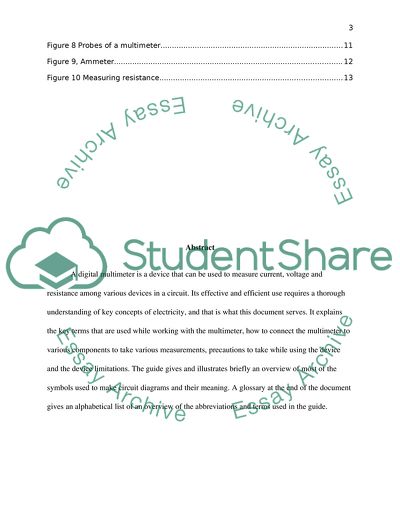Cite this document
(A User Guide: How to Use the Digital Multimeter Coursework Example | Topics and Well Written Essays - 1500 words, n.d.)
A User Guide: How to Use the Digital Multimeter Coursework Example | Topics and Well Written Essays - 1500 words. https://studentshare.org/engineering-and-construction/1793869-a-user-guide-how-to-use-the-digital-multimeter
A User Guide: How to Use the Digital Multimeter Coursework Example | Topics and Well Written Essays - 1500 words. https://studentshare.org/engineering-and-construction/1793869-a-user-guide-how-to-use-the-digital-multimeter
(A User Guide: How to Use the Digital Multimeter Coursework Example | Topics and Well Written Essays - 1500 Words)
A User Guide: How to Use the Digital Multimeter Coursework Example | Topics and Well Written Essays - 1500 Words. https://studentshare.org/engineering-and-construction/1793869-a-user-guide-how-to-use-the-digital-multimeter.
A User Guide: How to Use the Digital Multimeter Coursework Example | Topics and Well Written Essays - 1500 Words. https://studentshare.org/engineering-and-construction/1793869-a-user-guide-how-to-use-the-digital-multimeter.
“A User Guide: How to Use the Digital Multimeter Coursework Example | Topics and Well Written Essays - 1500 Words”. https://studentshare.org/engineering-and-construction/1793869-a-user-guide-how-to-use-the-digital-multimeter.


